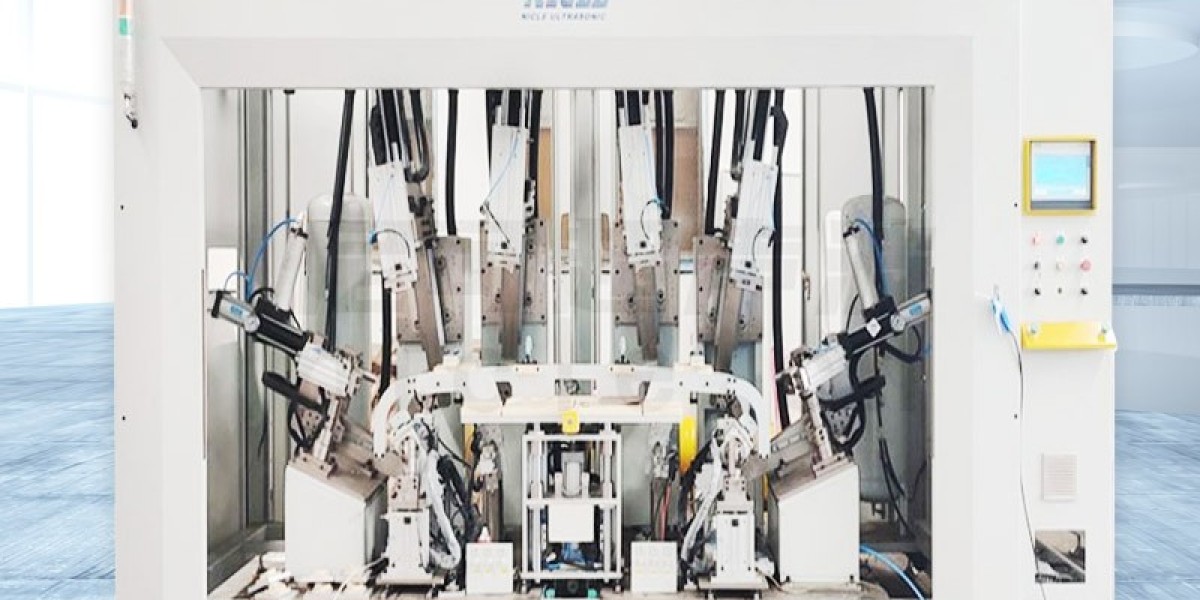Ultrasonic welding of polycarbonate (PC) is widely used due to its precision, speed, and clean finish. But like any process, it comes with its share of equipment issues and bonding failures. If your setup isn’t producing strong, consistent welds, the cause could range from incorrect parameters to worn tooling or equipment misalignment.
This hands-on guide covers the most common ultrasonic plastic welding problems involving PC parts, and how to diagnose and fix them without unnecessary downtime or trial and error.
1. Inadequate Bonding or Weak Welds
If PC parts aren’t fusing properly or joints fail under stress, the root cause is usually one of the following:
Possible Causes:
Incorrect amplitude or frequency: PC generally welds best at 20kHz with moderate amplitude. Too low, and there’s not enough energy transfer.
Insufficient weld time: Not enough time for the plastic to melt and flow properly.
Inadequate pressure: Weld force needs to be high enough to bring surfaces into intimate contact but not so high that it displaces molten material.
Part geometry: If parts don’t match precisely or the energy director is missing/misaligned, welds will be weak.
Contamination: Oils, dust or release agents can prevent effective bonding.
Solutions:
Verify machine settings: Check amplitude (30–50 microns for PC), weld time (typically 0.5–1.5 seconds), and pressure (20–60 psi depending on part size).
Clean parts before welding using isopropyl alcohol.
Inspect and redesign energy directors if needed.
Confirm correct tooling alignment and consistent horn-to-part contact.
2. Inconsistent Weld Quality
Your welds may alternate between strong and weak even with unchanged settings.
Possible Causes:
Tool wear or damage: The horn, booster or fixture may be worn or cracked.
Loose tooling: Vibrations are lost through unsecured connections.
Part variation: Minor differences in dimensions from one batch to another.
Thermal expansion: Machine temperature may drift during long runs.
Solutions:
Regularly inspect and replace horns or boosters after 100,000–200,000 cycles.
Tighten all fasteners on the stack (converter, booster, horn).
Use digital callipers to check incoming part consistency.
Allow welding equipment warm-up before use; maintain ambient conditions.
3. Flash or Excessive Melt at the Weld Line
Excess material spilling from the joint (known as flash) is a common visual defect that indicates excessive energy input.
Possible Causes:
Weld time too long or amplitude too high
Over-pressurised joint that forces molten plastic out
Poor energy director design creating excessive melt volume
Solutions:
Reduce weld time in 0.1-second increments.
Lower amplitude or reduce downforce slightly.
Modify the energy director height/angle to control flow more precisely.
Flash isn’t just cosmetic — it can interfere with mechanical fits or seals and may create stress risers in the part.
4. Cracking or Brittle Welds
This is particularly relevant to polycarbonate, which can become brittle when overexposed to heat or stress.
Possible Causes:
Over-welding: Too much energy causes polymer degradation.
Poor part design: Sharp corners or thin walls near welds create stress concentrations.
Material drying: PC absorbs moisture, which can cause bubbles and weak spots when heated.
Solutions:
Reduce energy input: lower time and amplitude.
Dry PC parts before welding (100°C for 2–4 hours depending on part size).
Use fillets or radius transitions in weld zone designs.
5. Machine Won’t Start or Fails Mid-Cycle
When the ultrasonic system won’t activate or halts unexpectedly, this points to system errors.
Possible Causes:
Horn not tuned: Frequency mismatch between horn and transducer.
Overload condition: Blockage or misalignment causing mechanical resistance.
Sensor failure: Faulty actuator or limit switches.
Power supply or control issue: Check for loose connectors or programming errors.
Solutions:
Run auto-tuning if available on your unit.
Remove the horn and test it free-running to isolate issues.
Inspect wiring and connections inside the control panel.
Review machine logs for fault codes.
A reset or reboot can solve many temporary glitches, but recurring failures usually mean it's time for professional service or component replacement.
6. Horn Sticking or Scoring the Part
This is usually a sign that vibration isn’t being cleanly isolated or that something’s misaligned.
Possible Causes:
Worn or dirty horn: Surface roughness or resin build-up increases friction.
Incorrect horn material: Some alloys wear out faster or react with PC.
Poor alignment: The horn may strike unevenly, causing dragging or deformation.
Solutions:
Polish or replace horn if surface wear is visible.
Clean the horn regularly with mild solvents.
Check fixture alignment using feeler gauges or dial indicators.
Use titanium or hardened aluminium horns for longer tool life.
7. Excess Noise or Vibration
While ultrasonic welding is designed to be high-frequency, unusual noise can indicate mechanical issues.
Possible Causes:
Loose stack components
Horn resonance failure
Worn converter or booster
Fixture vibration or lack of damping
Solutions:
Tighten stack with a torque wrench to manufacturer specs.
Replace worn horn or re-machine it.
Upgrade to damped fixtures or baseplates.
Install vibration isolators under the machine base.
Unusual vibration not only affects weld quality but also increases fatigue on machine parts.



